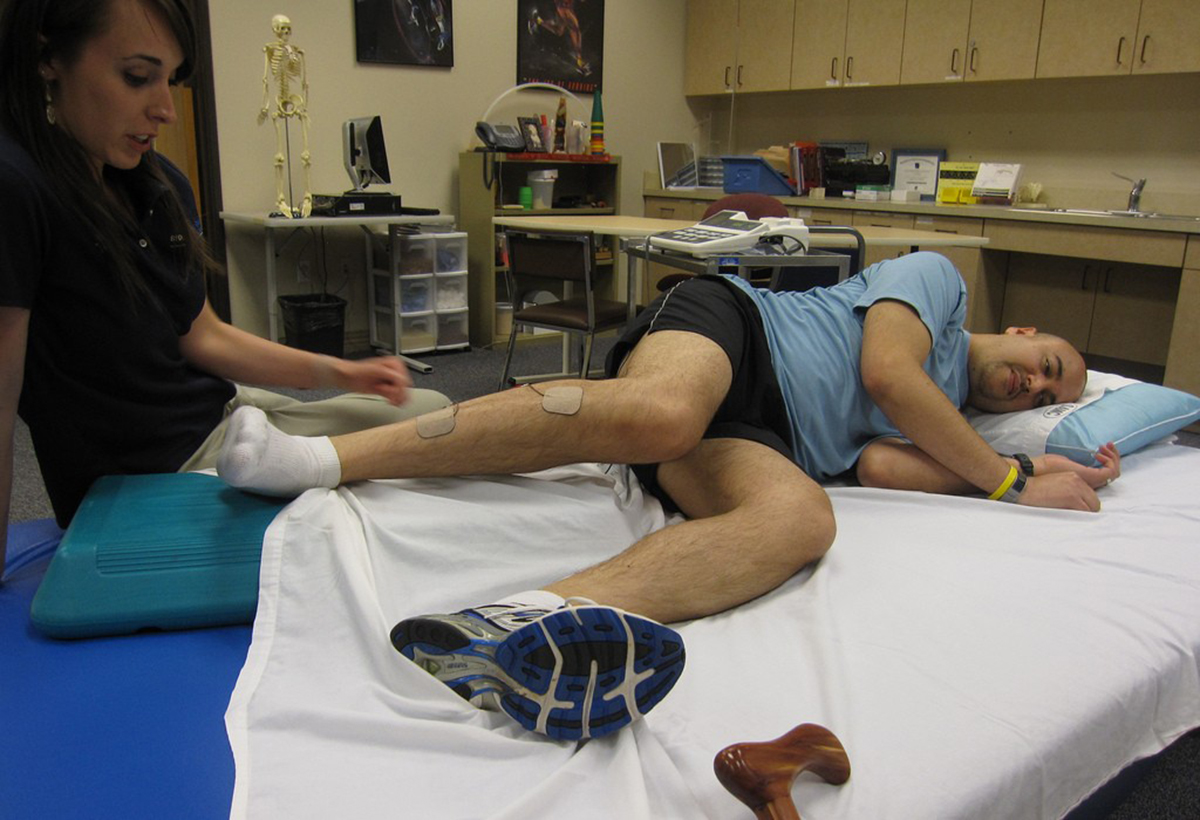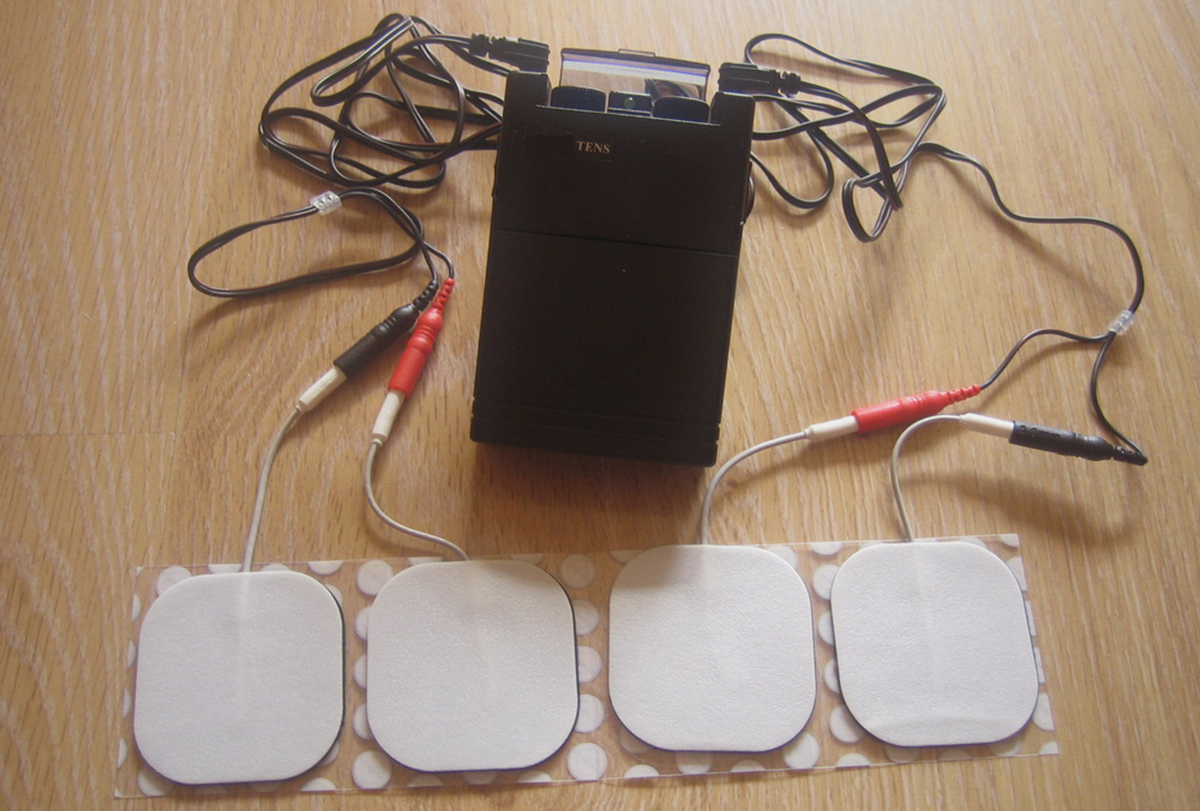Everyone experiences pain at one or the other time in life. Pain is a normal body response to an injury or physiological malfunction caused by an illness. Both acute and chronic pain can often be effectively treated with usual pain medications. But excruciating chronic pain that does not respond to pain killers tests the physical and mental limits of the sufferer. A patient who experiences such pain would be ready to undertake any available treatments to get a relief.

What is the difference between an acute pain and a chronic pain?
Any pain that originates suddenly is called an acute pain. It is usually caused by an injury and it does not last long. It subsides with time when the injury heals. All that is required is a pain medication if the pain is unbearable. But the case of a chronic pain, the one which lasts for more than 3-6 months, is different. It is usually connected to diseases and disorders like diabetes, cancer, arthritis, fibromyalgia etc. In a minority of cases, no definite cause can be figured out.
It can be challenging to treat pain that is refractory to the usual pain medications and that reappears after the medications are stopped.
A basic understanding of the mechanism of pain perception and the gate-control theory
The feeling of pain is originally generated in pain receptors, specific neural structures located everywhere in the body. To be felt as pain, the signals from these receptors has to be sent to the brain via special pain fibers. There are generally two types of pain fibers – A and C. A fiber, transmit fast and sharp pain signals while the C fibers conduct slow and diffuse pain signals. The A fibers also carry other non-noxious sensations like touch to the brain. All these sensory nerve fibers are connected to specific neurons in the spinal cord from where the signals are transmitted through neuronal pathways to the relevant parts of the brain and are thus perceived and interpreted.
See Also: Topical Pain Relievers: Which Work And Which Are Not Worth The Money
This has a scientific background. The gate-control theory, developed by Ronald Melzack and Patrick Wall in 1960s, explains the mechanism by which emotions and thoughts affect pain perception. According to this theory, a neurological gate in the spinal cord operates to block the pain signals carried by some nerve fibers while allowing those carried by the others. When there is a large amount of pain stimuli, the gate opens for these signals and they reach the brain. The sensory fibers that carry sensations other than pain are faster than the pain fibers in signal transmission. When a large amount of these sensory stimuli reach the synaptic cells, the gate is closed for pain signal transmission and hence pain is not perceived.
Electrical Nerve Stimulation Can Help In Pain Management
The gate control theory has opened ways for new pain management strategies like pain relief by electrical nerve stimulation. These strategies are used for drug-refractory and intractable pain caused by various disease conditions. The electrical nerve stimulation techniques can be invasive or non-invasive. Some of the currently used approaches include Transcutaneous Electrical Nerve Stimulation, repetitive Transcranial Magnetic Stimulation (rTMS), transcranial Direct Current Stimulation (tDCS), Peripheral Nerve Stimulation (PNS), Nerve Root Stimulation (NRS), Spinal Cord Stimulation (SCS), Deep Brain Stimulation (DBS) and Motor Cortex Stimulation (MCS).

In this technique, external electrical impulses are produced by electrodes placed over various parts of the body. These stimuli interrupt the pain signals and prevent them from reaching the brain. Thus there is no pain perception.
Mechanisms behind pain relief
Various mechanisms have been proposed to explain the pain relief produced by these techniques. The gate-control theory and the release of endogenous opioids by the electrical stimulation are two of them. These techniques have been used as supplementary modalities of pain management in many disease conditions. However, various studies that analyzed this approach of pain management produced conflicting results with regard to the effectiveness and long term benefits. These techniques are also contraindicated in patients with pacemaker and in pregnant women. They should not be used over places where sensations are compromised as they have the risk of causing burns.
Effects of electrical nerve stimulation in various conditions causing pain
In spite of heterogeneous results regarding the effectiveness and benefits of electrical nerve stimulation as a pain management approach, these techniques have been found to be useful in many patients suffering from pain caused by various disease conditions. Of these techniques, TENS is widely used for pain relief.
- Studies show reliable and positive effects of TENS in pain due to diabetic neuropathy.
- TENS is found to be good in post-operative pain.
- It has also been found to be effective in fibromyalgia pain relief. Fibromyalgia is a syndrome that commonly affects women. It is characterized by chronic pain and tenderness over specific points of the body. It is also common for the people affected by this disorder to complain of sleep disturbances, memory problems and fatigue. Studies suggest that besides providing pain relief, TENS can also help reduce fatigue, anxiety and stiffness in these patients.
- Another condition causing chronic and excruciating pain that is also disabling is migraine. Percutaneous Electrical Nerve Stimulation has been proven to be an effective alternative to the pharmaceutical grade medications used for chronic headache and migraine. This is an invasive procedure which requires the intervention of a medical doctor. In this procedure, needles are placed around the nerves that serve the painful area and are then stimulated. TENS has also been evaluated in reducing the frequency of headache attacks and it has been found to have moderate positive results.
- Pain relief by TENS has been demonstrated in arthritic pain.
- TENS has also been found to be a good option for low back pain relief during pregnancy. It has also been proven to be an effective pain relieving strategy during labor and delivery with no adverse effects on the mother and the newborn.
- However, the technique has not been found to be effective in treating chronic low back pain. Cancer pain is another complex sensation that is very difficult to treat with medications alone. It also affects the quality of life of the patients. Unfortunately, there are not much satisfactory results with electrical nerve stimulation in case of cancer pain.
Of all the electrical nerve stimulation techniques, TENS has been used in pain management for decades. The effects are beneficial in some patients and nil in others.
See Also: Crossing Your Arms Relieves Pain
The decision of using this modality for pain relief needs individualization and the decision depends on the type of pain, its response to other treatment modalities and the general conditions of the patient.
- Nizard J, Raoul S, Nguyen JP, Lefaucheur JP. Invasive stimulation therapies for the treatment of refractory pain. Discov Med. 2012 Oct, 14 (77): 237-46
- Zabara J, Barrett BT, Parnis SM. "Nerve stimulation as a treatment for pain." U.S. Patent No. 6,721,603. 13 Apr. 2004
- Sluka KA, Walsh D. Transcutaneous electrical nerve stimulation: Basic science mechanisms and clinical effectiveness. J Pain. 2003 Apr, 4(3): 109-21
- Nnoaham KE, Kumbang J. Transcutaneous electrical nerve stimulation (TENS) for chronic pain. Cochrane Database Syst Rev. 2008 Jul 16, CD003222
- Rutjes AW, Nuesch E, Sterchi R, Kalichman L et al. Transcutaneous electrostimulation for osteoarthritis of the knee. Cochrane Database Syst Rev. 2009 Oct 7, (4): CD002823
- Hurlow A, Bennett MI, Robb KA, Johnson MI, Simpson KH, Oxberry SG. Transcutaneous electric nerve stimulation (TENS) for cancer pain in adults. Cochrane Database Syst Rev. 2012 Mar 14, 3: CD006276
- Stein C, Eibel B, Sbruzzi G, Lago PD, Plentz Rd. Electrical stimulation and electromagnetic field use in patients with diabetic neuropathy: systematic review and meta-analysis. Braz J Phys Ther. 2013 Mar-Apr, 17(2): 93-104
- Rakel B, Frantz R. Effectiveness of transcutaneous electrical nerve stimulation on postoperative pain with movement. J Pain. 2003 Oct, 4(8): 455-64
- Carbonario F, Matsutani LA, Yuan SL, Marques AP. Effectiveness of high-frequency transcutaneous electrical nerve stimulation at tender points as adjuvant therapy for patients with fibromyalgia. Eur J Phys Rehabil Med. 2013 Apr, 49(2): 197-204
- Hesham E, Ahmed MD, Paul F et al. Use of Percutaneous Electrical nerve Stimulation (PENS) in the Short-term Management of Headache. Headache. 2000 April, 40(4): 311-5
- Allais G, de Lorenzo C, Quirico PE, Lupi G, Airola G, Mana O, Benedetto C. Non-pharmacological approaches to chronic headaches: transcutaneous electrical nerve stimulation, lasertherapy and acupuncture in transformed migraine treatment. Neurological Sciences. 2003 May, 24(2): s138-s142
- Ng MM, Leung MC, Poon DM. the Effects of Electro-Acupuncture and Transcutaneous Electrical Nerve Stimulation on Patients with Painful Osteoarthritic Knees: A Randomised Controlled trial with Follow-up Evaluation. Alternative Complementary Med. 2004 Jul 5, 9(5): 641-9
- Keskin EA, Onur O, Keskin HL, Gumus II, Kafali H, Turhan N. Transcutaneous electrical nerve stimulation improves low back pain during pregnancy. Gynecol Obstet Invest. 2012, 74(1): 76-83
- Kaplan B, Rabinerson D, Lurie S, Bar J, Krieser UR, Neri A. Transcutaneous electrical nerve stimulation (TENS) for adjuvant pain-relief during labor and delivery. Int J Gynaecol Obstet. 1998 Mar,60(3): 251-5
- Khadilkar A, Odebiyi DO, Brosseau L, Wells GA. Transcutaneous electrical nerve stimulation (TENS) versus placebo for chronic low-back pain. Cochrane Database Syst Rev. 2008 Oct 8, (4): CD003008
- Robb KA, Bennett MI, Johnson MI, Simpson KJ, Oxberry SG. Transcutaneous electric nerve stimulation (TENS) for cancer pain in adults. Cochrane Database Syst Rev. 2008, (4): CD006276.
- Photo courtesy of Roger Mommaerts by Flickr : www.flickr.com/photos/rmommaerts/5622825392
- Photo courtesy of Yeza by Wikimedia Commons : en.wikipedia.org/wiki/Transcutaneous_electrical_nerve_stimulation#mediaviewer/File:Tens.jpg

